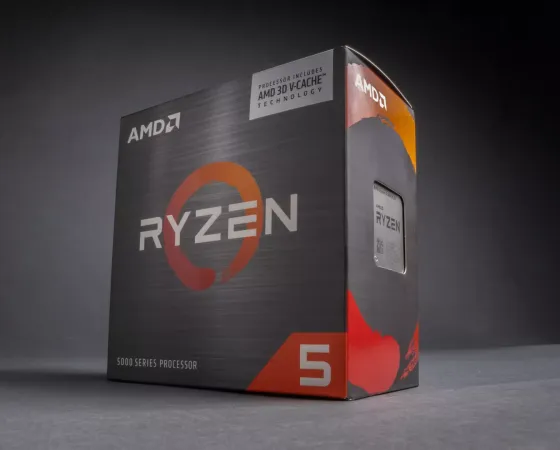Wave Energy Projects Have Come a Long Way After 10 Years
Read more of this story at Slashdot.
Read more of this story at Slashdot.
 À moins que le bug des SSD qui disparaissaient sous Windows 11 et qui obligeait certains (rares) utilisateurs à redémarrer leur PC pour qu'ils apparaissent à nouveau ne fasse un retour en force dans les prochains jours, ce qui semble vraiment peu probable, il semblerait bien que nous soyons en train...
À moins que le bug des SSD qui disparaissaient sous Windows 11 et qui obligeait certains (rares) utilisateurs à redémarrer leur PC pour qu'ils apparaissent à nouveau ne fasse un retour en force dans les prochains jours, ce qui semble vraiment peu probable, il semblerait bien que nous soyons en train...
Read more of this story at Slashdot.
Mise à jour du 30 août à 21h00. 2h30 après le début de la panne, le CIC et le Crédit Mutuel ont enfin communiqué sur l’incident : « Un dysfonctionnement interne a empêché ce jour, entre 17h20 et 19h30, les paiements et retraits par carte bancaire de nos clients. La cause interne de l’incident a été identifiée et résolue grâce à la mobilisation de nos équipes informatiques », explique le CIC sur X.com.
Même communication au Crédit Mutuel (les deux banques appartiennent au même groupe), avec une petite précision supplémentaire : les « sociétaires et clients de 16 fédérations » étaient affectés. CIC et Crédit Mutuel s’excusent auprès de ses clients et des commerçants.
Aucun détail technique n’est par contre donné par l’une ou l’autre des enseignes.
Brief du 30 août à 19h38. Dernier week-end d’aout et derniers jours avant la reprise des cours pour bon nombre de français… Mais cette journée est ponctuée par une panne affectant les clients CIC et Crédit Mutuel qui ne peuvent plus payer par carte bancaire ou retirer de l’argent. Des millions de clients sont donc concernés.
Les messages affluent de partout sur les réseaux sociaux, le problème est national. Dans les magasins, les clients doivent donc trouver un autre moyen de payer que leur carte CIC ou Crédit Mutuel (autre banque, chèque, espèce).
Il est par contre possible de créditer de l’argent sur une carte CIC, nous en avons fait l’expérience. Vers 18 h, un membre de la rédaction a également pu valider un paiement par Internet avec une CB du Crédit Mutuel. N’hésitez pas à nous faire part de vos retours sur cette panne.

La panne a commencé en fin d’après midi selon les retours (vers 17h00) mais, faute de communication, les spéculations vont bon train. En effet, aucune des deux banques n’a pour le moment communiqué auprès de ses clients – notification sur l’application mobile (qui fonctionne), ou autre canal – ni sur les réseaux sociaux. De leur côté, les commerçants ne semblent pas avoir plus d’informations pour le moment.
Nous mettrons à jour ce brief quand nous aurons de plus amples détails.
Mise à jour du 30 août à 21h00. 2h30 après le début de la panne, le CIC et le Crédit Mutuel ont enfin communiqué sur l’incident : « Un dysfonctionnement interne a empêché ce jour, entre 17h20 et 19h30, les paiements et retraits par carte bancaire de nos clients. La cause interne de l’incident a été identifiée et résolue grâce à la mobilisation de nos équipes informatiques », explique le CIC sur X.com.
Même communication au Crédit Mutuel (les deux banques appartiennent au même groupe), avec une petite précision supplémentaire : les « sociétaires et clients de 16 fédérations » étaient affectés. CIC et Crédit Mutuel s’excusent auprès de ses clients et des commerçants.
Aucun détail technique n’est par contre donné par l’une ou l’autre des enseignes.
Brief du 30 août à 19h38. Dernier week-end d’aout et derniers jours avant la reprise des cours pour bon nombre de français… Mais cette journée est ponctuée par une panne affectant les clients CIC et Crédit Mutuel qui ne peuvent plus payer par carte bancaire ou retirer de l’argent. Des millions de clients sont donc concernés.
Les messages affluent de partout sur les réseaux sociaux, le problème est national. Dans les magasins, les clients doivent donc trouver un autre moyen de payer que leur carte CIC ou Crédit Mutuel (autre banque, chèque, espèce).
Il est par contre possible de créditer de l’argent sur une carte CIC, nous en avons fait l’expérience. Vers 18 h, un membre de la rédaction a également pu valider un paiement par Internet avec une CB du Crédit Mutuel. N’hésitez pas à nous faire part de vos retours sur cette panne.

La panne a commencé en fin d’après midi selon les retours (vers 17h00) mais, faute de communication, les spéculations vont bon train. En effet, aucune des deux banques n’a pour le moment communiqué auprès de ses clients – notification sur l’application mobile (qui fonctionne), ou autre canal – ni sur les réseaux sociaux. De leur côté, les commerçants ne semblent pas avoir plus d’informations pour le moment.
Nous mettrons à jour ce brief quand nous aurons de plus amples détails.
Read more of this story at Slashdot.
Read more of this story at Slashdot.
Torsin est une marque qui semble sortir de nulle part. Au grand jeu des solutions proposées en financement participatif, elle tente l’aventure avec un netbook assez intéressant sur le papier.

Le Torsin 10.5 pouces propose un écran IPS de 1920 x 1280 pixels tactile qui se tourne sur un axe central pour se superposer au clavier. Une manière de se transformer en tablette tactile. Un accéléromètre est présent pour basculer en mode portrait ou paysage. L’écran annonce une luminosité de 300 nits ainsi qu’une couverture de 100% de la colorimétrie sRGB.

Il propose un équipement intéressant avec un processeur Intel N150 suffisant pour la majorité des tâches grand public. De 16 et jusqu’à 32 Go de mémoire vive DDR4-3200 sur un slot et un stockage SSD de type M.2 allant de 1 à 2 To. Aucune info précise quant au SSD employé, on sait qu’il s’agit d’un M2 NVMe mais on ne connait pas sa taille ni le type de technologie utilisée.

D’après les images, il semble que ce soit un M.2 2280 mais cela reste assez flou. Dans tous les cas, qu’il s’agisse de la mémoire ou du stockage, l’incidence ne sera par énorme sur les performances globales du processeur. La puce Intel ne gère que la mémoire monocanal et l’impact entre un NVMe Gen2, 3 ou 4 reste assez faible d’un point de vue traitement. Pour piloter ce système, le netbook propose une version de Windows 11 Pro préinstallée (enfin presque, voir plus bas).

Le Torsin 10.5″ propose une connectique basique avec deux ports USB 3.0 Type-A, un jack audio combo 3.5 mm, un lecteur de cartes MicroSD, une sortie vidéo MiniHDMI et deux ports USB Type-C décrits comme « toutes options ». Ce qui veut dire qu’ils font circuler des données, sont Power Delivery et peuvent proposer un signal DisplayPort. Pas d’infos, par contre, sur le débit des données, on imagine des ports au moins USB 3.0.

L’engin embarque deux cameras, une solution 1 Mégapixel 720P pour la vidéo conférence et une seconde caméra 0.3 MP en infrarouge pour la reconnaissance faciale. Ces deux capteurs semblent situés sur la partie basse de l’écran, à droite de la charnière centrale. Ce qui ne sera pas forcément formidable pour dialoguer en vidéo. La machine propose un clavier QWERTY avec rétro éclairage et des enceintes intégrées.

Le pavé tactile est étroit et… ovale. Une idée toujours aussi peu intelligente puisqu’elle ne correspond pas à la forme de l’écran. Les bords de cette zone tactile ont en plus l’excellente mauvaise idée de proposer des boutons. À gauche baisse du volume et réduction de luminosité et à droite le contraire. On imagine qu’en manipulant le pavé, on pourra appuyer malencontreusement sur ces boutons par inadvertance. Glorieuse idée.

La batterie intégrée est une solution 5500 mAh qui se recharge via USB Type-C. Torsin ne donne aucun détail précis d’autonomie. Le tout est intégré dans un châssis métallique mesurent 24.5 cm de large pour 18.8 cm de profondeur et 2.05 cm d’épaisseur. Il pèse 980 grammes.

L’engin est proposé à partir de 378$ HT. Soit 324€ HT. Plus les frais de port. Mais attention, pour ce tarif, vous recevrez un barebone, c’est à dire un engin livré sans mémoire vive, sans stockage et sans système d’exploitation. il faudra rajouter 85€ pour 16 Go de mémoire et 1 To de stockage. Et 214€ HT pour 32 Go de DDR4 et 2 To de SSD. Ce qui est assez cher si on regarde les prix du marché. Une barrette de RAM Corsair DDR4-3200 32 Go coute 100€, un SSD NVMe Kingston de 2 To coute 112€. On arrive donc à 212€ au lieu de 214€ mais avec une petite différence, les 214€ demandés sont Hors Taxes et les 100€ sont TTC…

Mon plus gros souci vient de Torsin lui même. Cette marque est absolument inconnue au bataillon et je suis persuadé qu’elle n’est pas à l’origine de cette machine qui ressemble fortement à de nombreux netbooks-like apparus ces dernières années sur le marché Chinois. Quasiment tous sous processeur Atom ou Celeron. Ce modèle sous Intel N150 est peut-être juste un des premiers à être commercialisés alors qu’ils sont encore en pré-production. Je ne serais pas surpris que l’on voie des clones sur AliExpress assez rapidement.

Torsin dit se situer en Californie sur la page de Kickstarter de ce qui est son premier projet. Il semble pourtant évident qu’il s’agit d’une société Chinoise, la vidéo de présentation ne laisse pas de doute à ce sujet. Cette campagne est la première de la marque, et avant cette date, je ne trouve absolument aucune mention de Torsin où que ce soit.
Pour rappel, le Chuwi MiniBook X 2025 sous Intel N150 en version 12/512 Go avec une licence de Windows 11 est à moins de 284€ sur AliExpress… Mais vous faites ce que vous voulez.
Source : NotebookCheck
Torsin lance un netbook 10.5 sous Intel N150 sur Kickstarter © MiniMachines.net. 2025
 Il y a maintenant dix mois déjà, le 24 octobre 2024 pour être précis, Intel lançait sa nouvelle gamme de processeurs pour ordinateurs de bureau répondant au nom de code Arrow Lake-S : les Core Ultra 200S. Comme le montrait notre test à H&Co, cette nouvelle série n'est pas dénuée d'intérêt en app...
Il y a maintenant dix mois déjà, le 24 octobre 2024 pour être précis, Intel lançait sa nouvelle gamme de processeurs pour ordinateurs de bureau répondant au nom de code Arrow Lake-S : les Core Ultra 200S. Comme le montrait notre test à H&Co, cette nouvelle série n'est pas dénuée d'intérêt en app...
Read more of this story at Slashdot.
Read more of this story at Slashdot.
 Très longtemps seul au sommet du SSD PCIe 5.0 depuis son introduction avec le PS5026-E26, Phison doit toutefois maintenant compter avec la concurrence. En effet, l'arrivée du SM2508 chez Silicon Motion et le lancement de la série 9100 PRO avec le nouveau contrôleur Presto chez Samsung ont redistribu...
Très longtemps seul au sommet du SSD PCIe 5.0 depuis son introduction avec le PS5026-E26, Phison doit toutefois maintenant compter avec la concurrence. En effet, l'arrivée du SM2508 chez Silicon Motion et le lancement de la série 9100 PRO avec le nouveau contrôleur Presto chez Samsung ont redistribu...
Read more of this story at Slashdot.

C’est la rentrée et personne n’y échappe, surtout celle dans le lard !
Zuckerberg, après avoir mille fois retourné sa veste, s’habille en Prada avec son IA, voilà pour ce drôle d’oiseau qui pense que faire flirter son algo avec des ados, c’est réglo.
Puisqu’on en est à l’ultra fast fashion boostée et que certains ont déjà les plumes, il ne manque plus que le goudron.
De son côté, Trump ne fait pas dans le détail avec la volaille préférée des États-Unis.
C’est toujours le festival des cuisseaux pour les perdreaux de six semaines, n’en déplaise au poulet de l’Arcom qui fait la pan avec son bilan.
Israël a des airs de poule aux œufs d’or pour Microsoft, qui préfère faire l’autruche tant qu’elle peut étoffer son petit nid douillet.
Tout ça donne envie de se barrer au pôle sud, pas de bol, pas moyen d’être tranquille : là-bas même les manchots se font casser les œufs.

 AMD ne s'est toujours pas exprimé officiellement concernant la rumeur qui se répandait en début de mois, annonçant la fin de vie commerciale du Ryzen 7 5700X3D. Les faits semblent cependant lui donner raison puisqu'après de nombreux pays dont les États-Unis, au milieu du mois d'aout c'était au tour...
AMD ne s'est toujours pas exprimé officiellement concernant la rumeur qui se répandait en début de mois, annonçant la fin de vie commerciale du Ryzen 7 5700X3D. Les faits semblent cependant lui donner raison puisqu'après de nombreux pays dont les États-Unis, au milieu du mois d'aout c'était au tour...